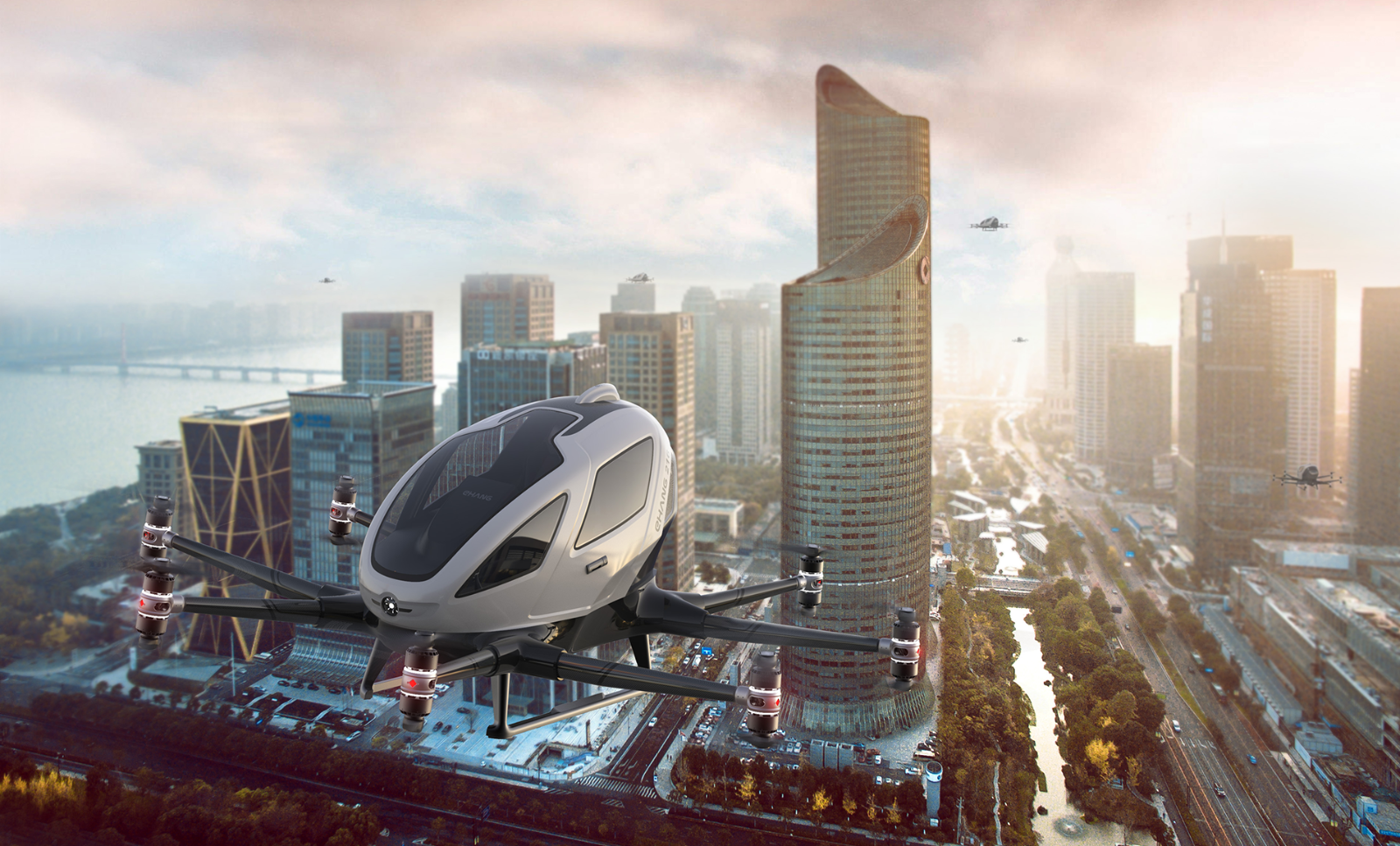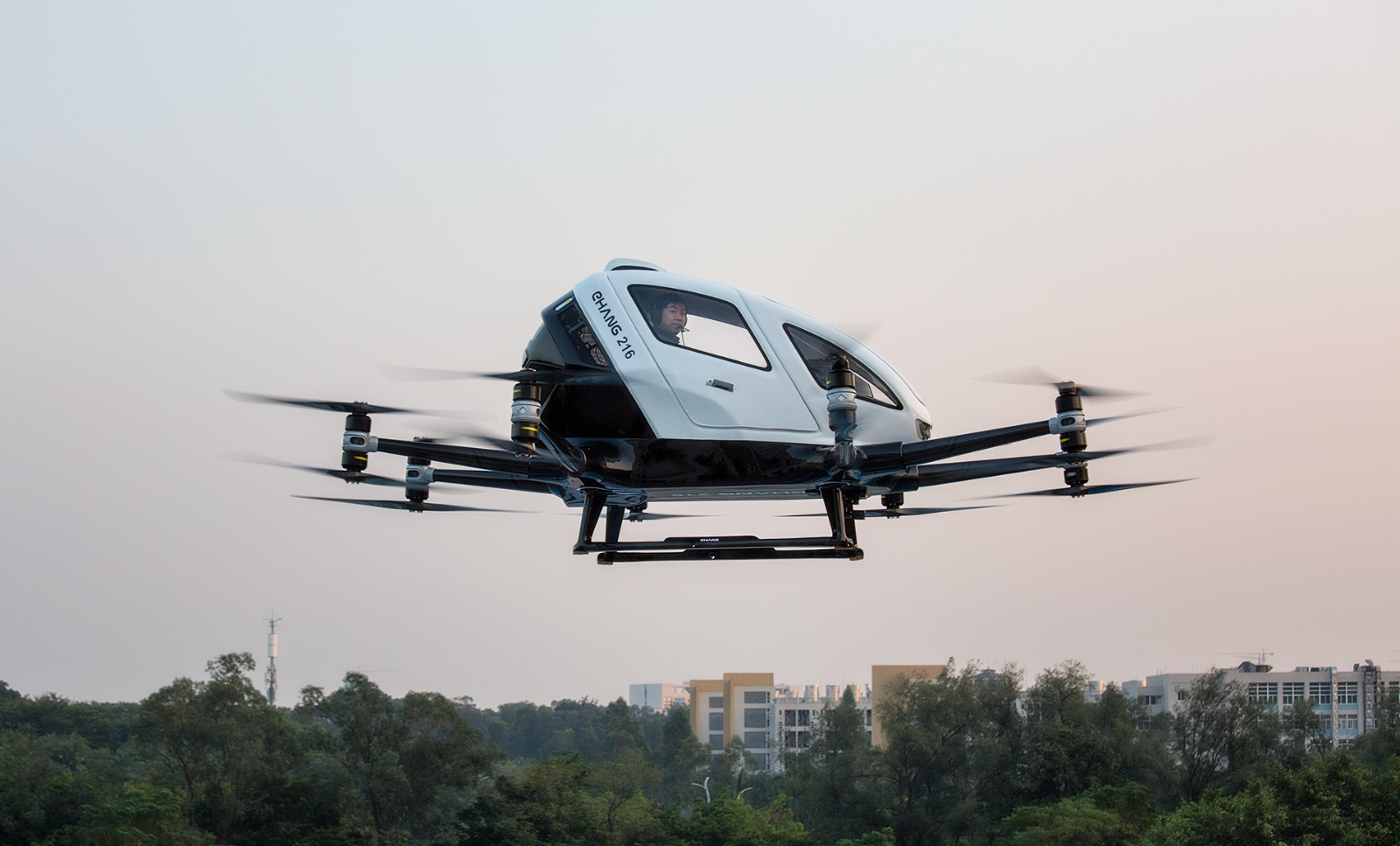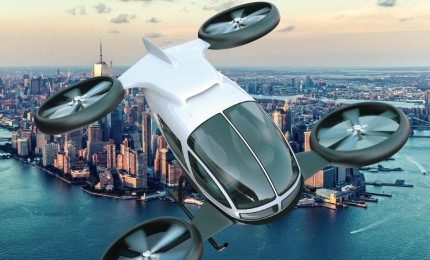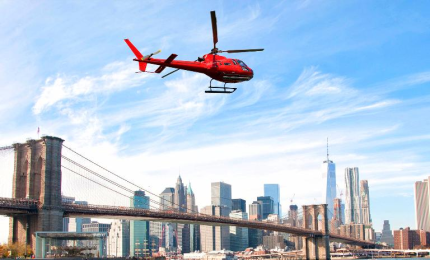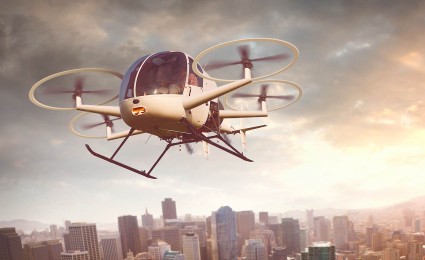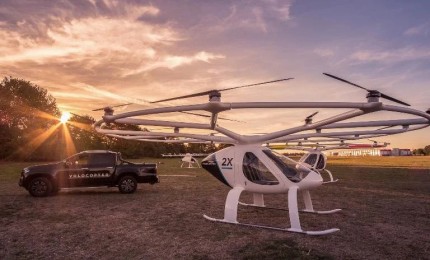

EHang implements its vision of UAM by setting up a test center in Guangzhou
How to achieve a mature urban air mobility ecosystem
EHang is already performing hundreds of manned flights with autonomous aerial vehicles, based on remote control, and expects the first commercial routes to be in service soon. To achieve this vision it is key to work together with partners for the set-up of the infrastructure, such as landing sites and communication networks. Read in our interview with Yifang (Derrick) Xiong, the Co-founder of EHang what specific challenges need to be mastered to develop the UAM ecosystem and how he intends to position EHang.
"Urban Air Mobility adds a new dimension to traditional transportation networks by using the empty airspace over urban areas and provides therefore a large future business potential."
Why do you see a great potential for Urban Air Mobility and what future use cases do you see?
By 2050, 67% of the world's population will reside in urban areas, up from 54% as of today. This increasing urbanization brings traditional two dimensional land based transportation networks to their limits. Urban Air Mobility (UAM) will add a new dimension by using the empty airspace over large urban areas and provides therefore a large future business potential . In addition it will allow to operate use cases, currently owned by helicopters such as supply of oil platforms, at much lower cost. We see three major use cases for our vehicles: Transportation of passengers in urban areas, transportation of medical goods as well as transportation of passengers and cargo for industrial use cases such as for example for oil exploration.
In which country do you expect the first commercial UAM flights to take place?
We as EHang have up to now performed more than 2000 test flights with our vehicles and have received last year the approval for pilot program from CAAC (Civil Aviation Administration of China). Since then we have transported more than 200 passengers in China and are flying regularly at our testing facilities in residential areas in Guangzhou. This is enabled as our vehicle is auto flying along the preset flight routes without any pilot manual controls, meanwhile remotely monitored by the ground command and control centre. In my view we will also see the first commercially operated routes in China given the maturity of our system, the regulatory environment in China and also the willingness of the municipal governments. We have for example set up a partnership with the Guangzhou municipal government to make Guangzhou the first UAM City in the world. However, in addition we were also able to conduct first flights with passengers in countries like Austria or the Netherlands as well as in the Middle East.
How would the split of work between yourself, the municipal governments and other partners look like?
When we have started the work on our drones five years ago there were no supplier companies available in the market which focused on this new technology. Therefore we have performed a lot of R&D on the eVTOL, the sub-systems as well as the drone control center and hold, as a result, a lot of patents in these fields. To set up the overall UAM ecosystem we are working together with partners. We have for example announced in the middle of October 2019 a partnership with Vodafone in order to collaborate in the field of 5G communication for the navigation and communication of the eVTOL vehicles. In addition we are collaborating with municipal governments for the set-up of the respective infrastructure, such as landing sites. For these landing sites we will decide also on a case by case basis if we will own them or if they are owned by a third party.
"67% of people are forecasted to reside in urban areas by 2050, requiring a new dimension of transportation."
You talked a lot about the drone control center. How is it different to air traffic management?
Drone control center are comparable to what airlines have today with their operations center. Drone control center monitor the drones during the flight, re-route the drones based on the passenger demand. They also get involved in case of major incidents such as local thunderstorms or blocked landing sites. Air traffic management ensures that the drones can fly in the same airspace with helicopters or other aircraft. To secure successful operations the drone control center and the air traffic management need to be connected and interact smoothly. In addition we are using our drone control centers in order to remotely control the eVTOL vehicles which allows us to fully leverage the capacity of the drone from the beginning.
What is the benefit of specifying the drone control center as well as the drones?
We see a huge benefit of being able to specify the overall system comprising of the drone itself as well as the drone control center. We can for example gather the operational data from the drones and use them to optimize the next generation of drones. For the command and control of the drones we are leveraging the experience which we have from our live performance acts with smaller drones. We have for example performed more than 200 light shows, with up to 1500 drones per show, in the last 2-3 years in Asia but also in Europe. For the drones as well as the drone control center we are not only developing and manufacturing the hardware but also the software. Software development is a key competence of our company.
What is the target position of EHang in the UAM ecosystem?
We will act on the one side on specification, development and manufacturing of the eVTOLs as well as the drone operation center. In addition, depending also on the target country, we will also act as an operator of the drone control center and the eVTOL vehicles.
What is the major challenge going forward?
The technology is ready and also authorities are working around the globe to finalize the regulatory frameworks. The challenge going forward is to achieve public acceptance in a way that it allows to scale up the market. Key for achieving public acceptance is to conduct as many flights as possible to show reliability and safety of our product. It is also a huge benefit that many legacy aerospace companies – be it OEMs such as Airbus, Boeing or Bell, or suppliers, such as Honeywell or FACC – are entering the UAM space and are contributing their experience and know-how as well as their credibility.

